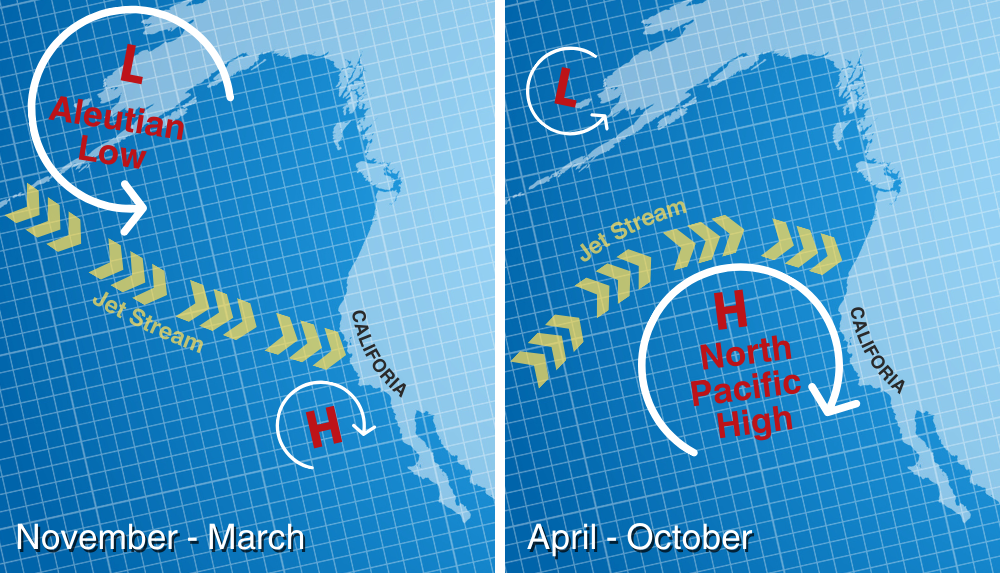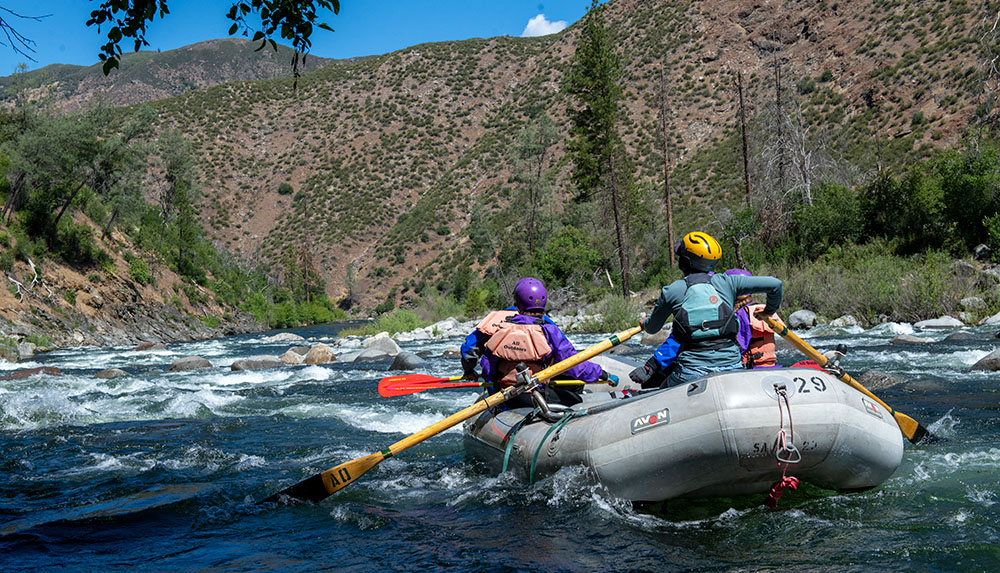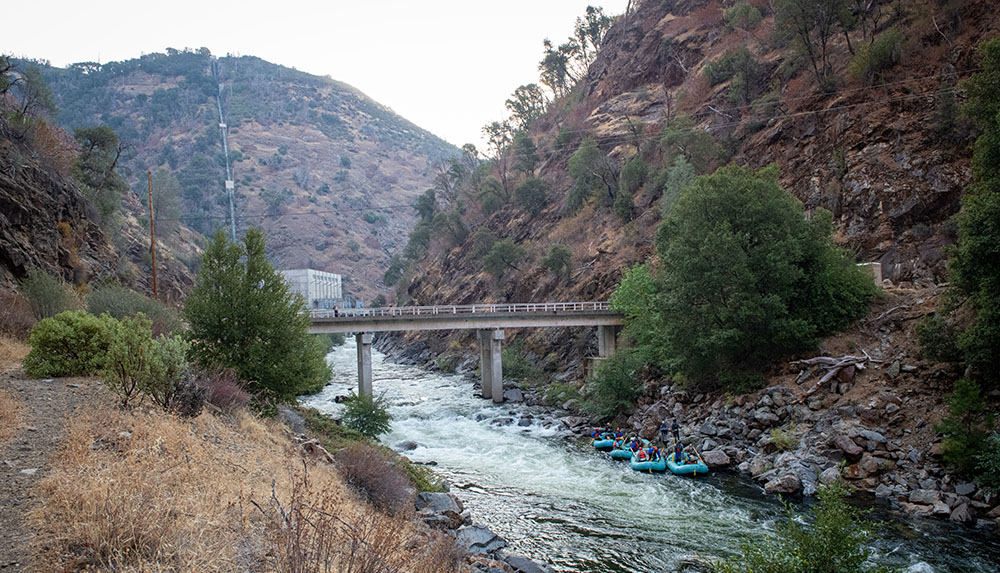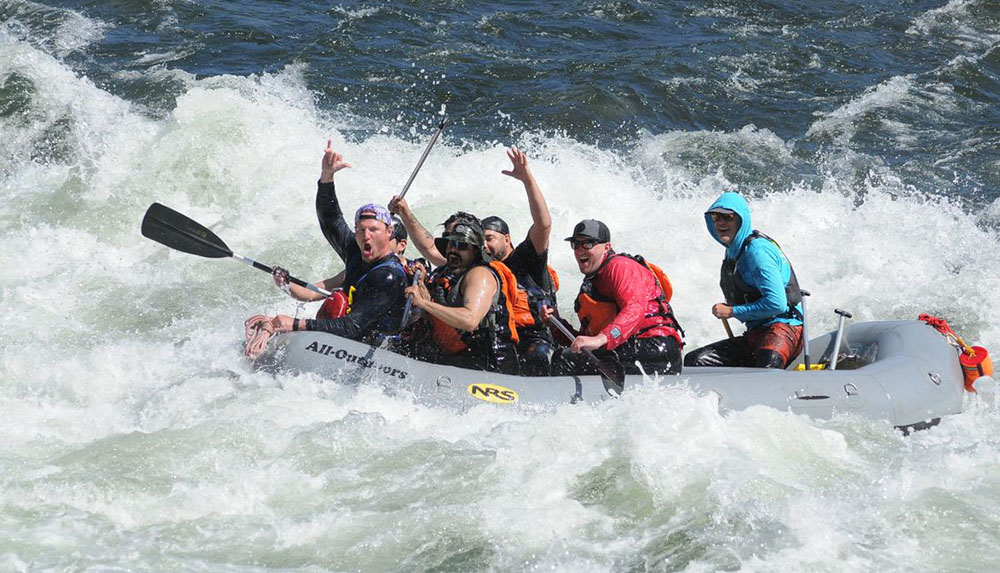Why California is the Hub of Whitewater Rafting
Posted March 29, 2024 by Gregg Armstrong, Co-Founder
There are hundreds of thousands of rivers in the world. After all, the process of cloud formation, evaporation, and wind is endless and widespread, creating wonderful rivers on every continent of the globe! But when it comes to white water rivers, there is a State that has more rafting opportunities than anywhere else in the US and perhaps in the world.
The 6 Factors that Make California the Hub for Whitewater Rafting:
1. The Climate
California has an amazing climate. This is not just because it has an average of 260+ days of sunshine a year, but also because it receives enough precipitation during the remaining days of the year to make it water-rich! This wonderful climate has attracted people here for thousands of years, starting with the Native Americans. The climate of California (the dry and the wet of it) is largely responsible for making the Golden State a hub for whitewater rafting.
For the most part, California has dry weather for seven months of the year from April through October. This is perfect rafting weather and creates four distinct seasons within the seven-month-long California rafting season. What more could you ask for if you are looking for a fun time splashing through rapid after rapid for one, two, or three days and enjoying the stunning scenery? Add to this camping on a remote beach with delicious catered meals and the temptation is hard to resist.
But such a rafting experience would not be possible if it were not for the other five “wet” months of the year. California receives most of its precipitation from weather systems arriving from the Pacific Ocean between November and April. These storms pass through our State from west to east. First, the Coast Ranges and then the Central Valley receive their dose of rain, before snow blankets the peaks of the Sierra Nevada mountains. Without these months of wet weather each year, California would not be as we know it. The same is true of California rafting. In fact, rafting would barely exist if it were not for this kind of wet winter season.

2. The Sierra Nevada Mountains
The well-balanced climate of California is not enough to make our State a hub for rafting. Without the Sierra Nevada mountain range, California would still be mostly desert and rivers would be few and far between. This amazing mountain range that stretches over the entire length of the state (400 miles) serves as a vast water catchment, capturing precipitation from storms as they sweep in from the west across the Pacific Ocean.
When water-laden storm clouds approach the Sierra Nevada, they slow down and are forced up by the increase in elevation. The upward motion and subsequent loss of pressure cause them to release rain and snow. This process happens over and over again all winter long. By the time we get to spring, the Sierra has collected enough water for the seven months of dry weather in California! It is the perfect setup for rivers, lakes, people, animals, fish, plants, and farms. It also creates numerous amazing white water rafting opportunities in our State.
3. The Number of Rivers
When you combine the ideal climate in California with the “precipitation-catching” Sierra Nevada, you end up with rivers…lots of them! Add the smaller number of rivers coming out of the Coast Ranges of California and the total gets even bigger!
Not all rivers qualify as “white water rafting worthy”, but if you start with a large number and narrow it down to the waterways that work well for rafting, you end up with a significant number. Additionally, looking up the white water rivers on a map, it does not take long to notice they are close together…Many times just a canyon ridge apart! California not only has many rivers, but the rivers it has are often next door to each other. The number and the proximity of white water rivers in the Golden State is remarkable.

4. The Sierra Foothills
The other important geological phenomenon that plays into the “hub equation” is the Sierra Foothills. These long rolling hills create the perfect scenario for a white water river. They start on the western side of the Sierra Nevada and work their way slowly and evenly to the Central Valley. The gradual drop in elevation of the foothills causes rivers to move at an even pace…not too fast and not too slow.
When rivers drop too quickly they become too fast for white water rafting. The rapids become too long, too powerful, too steep, and too complicated to be navigated safely. In other words, they are “unrunnable” and are put into the Class 6 category of the river classification system. Also, a white water river needs to have a calm section between rapids for guides and guests to regroup from the rapid they just went through and get ready for the next rapid they are heading towards. Rivers dropping too quickly in elevation have no time or space for calm sections.
On the contrary, a river that moves too slowly is great for the likes of Tom Sawyer floating aimlessly and freely down the Mississippi River to discover whatever mischief awaits. Slow-moving, flat rivers are better for canoeing, fishing, or leisurely floating along, not for anyone seeking the joy and thrill of white water.

5. Consistent & Predictable Water Flows
Consistency is crucial to almost everything in life. This is certainly true when it comes to white water rafting. You need the right amount of water and you need it to be consistent and predictable.
Without dependable water flows in a river, you will never know if it will be runnable when you arrive. You may show up at the river and find the flow just right, but later in the middle of the trip, the water levels could drop abruptly and you will not be able to proceed downstream. This is when you wished you brought a sleeping bag and some food because who knows when the water will come up again! Of course, the opposite is true too. If the water suddenly rises to an extreme and unsafe rafting level, you will not be able to raft.
Due to the climate patterns and the Sierra Nevada’s ability to catch the winter precipitation coming from the Pacific Ocean, California has a large amount of water. Because most of the precipitation is in the form of snow high in the mountains, water is released into the rivers at a gradual pace as the warmth of spring and summer arrives. But even this natural supply is not enough to keep rafters happy from April through October. Water flows have become more consistent and predictable by something humans have made and developed…
A large network of high-elevation dams built for the purpose of power generation, storage of irrigation and drinking water, flood control, and recreation, are located just below the snow level of the Sierra Nevada and above the foothills. These man-made structures capture melting snow in the spring and early summer and let it out gradually for the rest of the year. The Sierra Nevada’s ability to “catch” precipitation and the ability to hold back water for later releases create the winning combination…water flows in rivers that are consistent and predictable! One big reason California is the hub for white water rafting is that people can plan to go rafting in spring, summer, and fall due to dependable water flows.

6. Proximity & Easy Access
This may sound too simple and a little strange, but rafts don’t go down rivers without people. To be a hub for white water rafting, you need the rivers to be located close to where people live. Thousands and thousands of rivers in the world have good rapids, necessary calms, great scenery, and the right amount of consistent water flows, but are too difficult or too far to get to. Luckily, most Californians live within a few-hour drive from white water because these rivers are strung along the Sierra foothills up and down the State!
Additionally, rafting rivers also need good road access to the “put-in” at the top of the run and to the “take-out” at the bottom of the run. The need to hike miles and miles into and out of a canyon carrying all your rafting equipment and belongings is not practical. Due to the Gold Rush that began in 1849, the development of hydropower in the early 1900’s, and the expanding population that followed in California, numerous roads have been built in the Sierra foothills giving access points to rivers at critical junctions. Many of these points are ideally situated for “put-ins” for the beginning of rafting trips and “take-outs” for the ending of trips. Good access is another reason why California wins the coveted designation of being the hub for white water rafting.

California has managed to put all the necessary elements together to become a mecca for white water rafting. The climate, the 400-mile Sierra Nevada mountain range, the large number of rivers, the Sierra foothills, the consistent and predictable water flows, the close proximity of rivers, and the access points, all add up to amazing opportunities to enjoy and benefit from all that white water rafting trips have to offer. If you want rafting, California is the place to be. It is no surprise that the sport of rafting found its birth here. It is no surprise that this sport has also made its home here and has more rivers to choose from in a relatively small area than anywhere else in the US and maybe even in the world.
